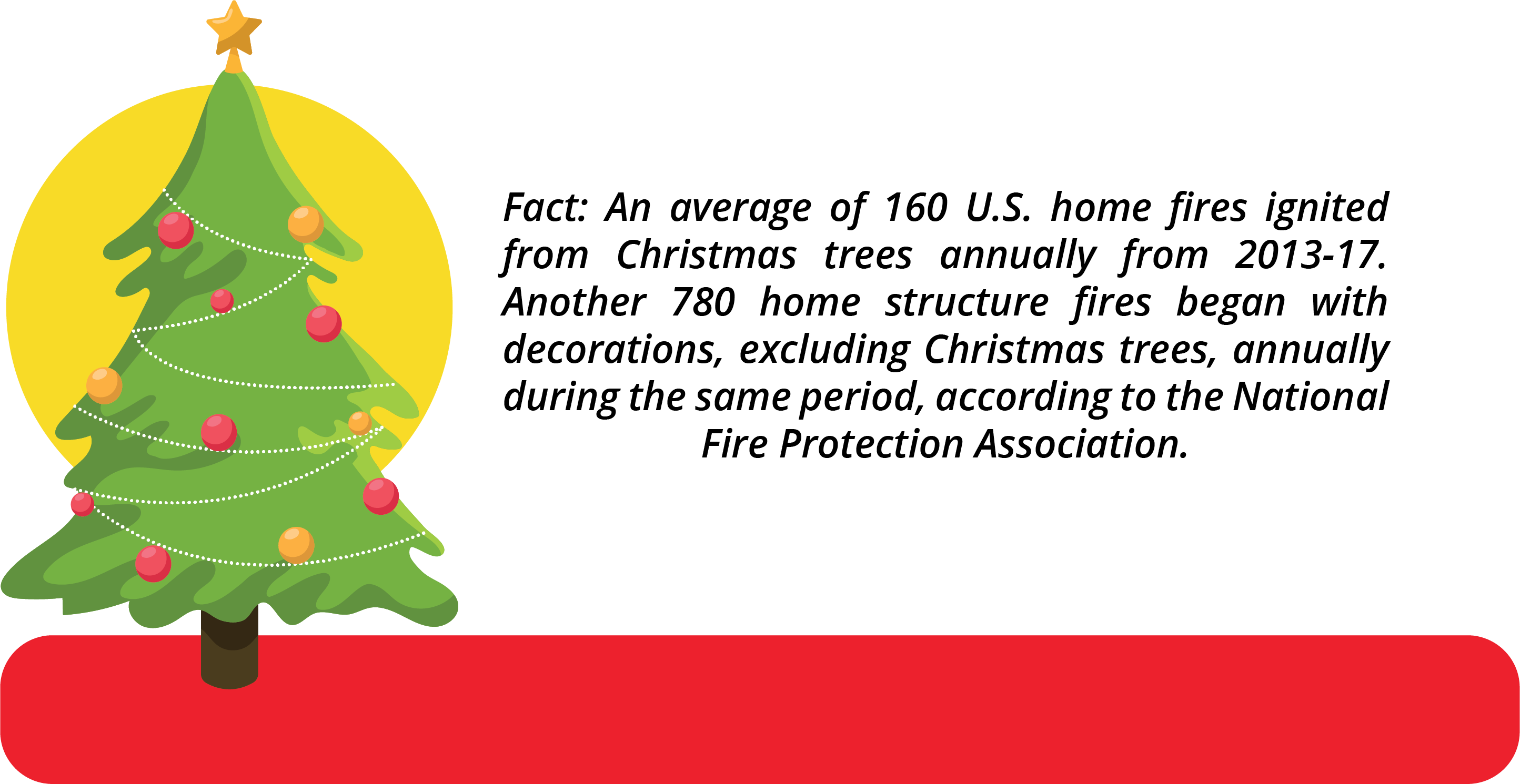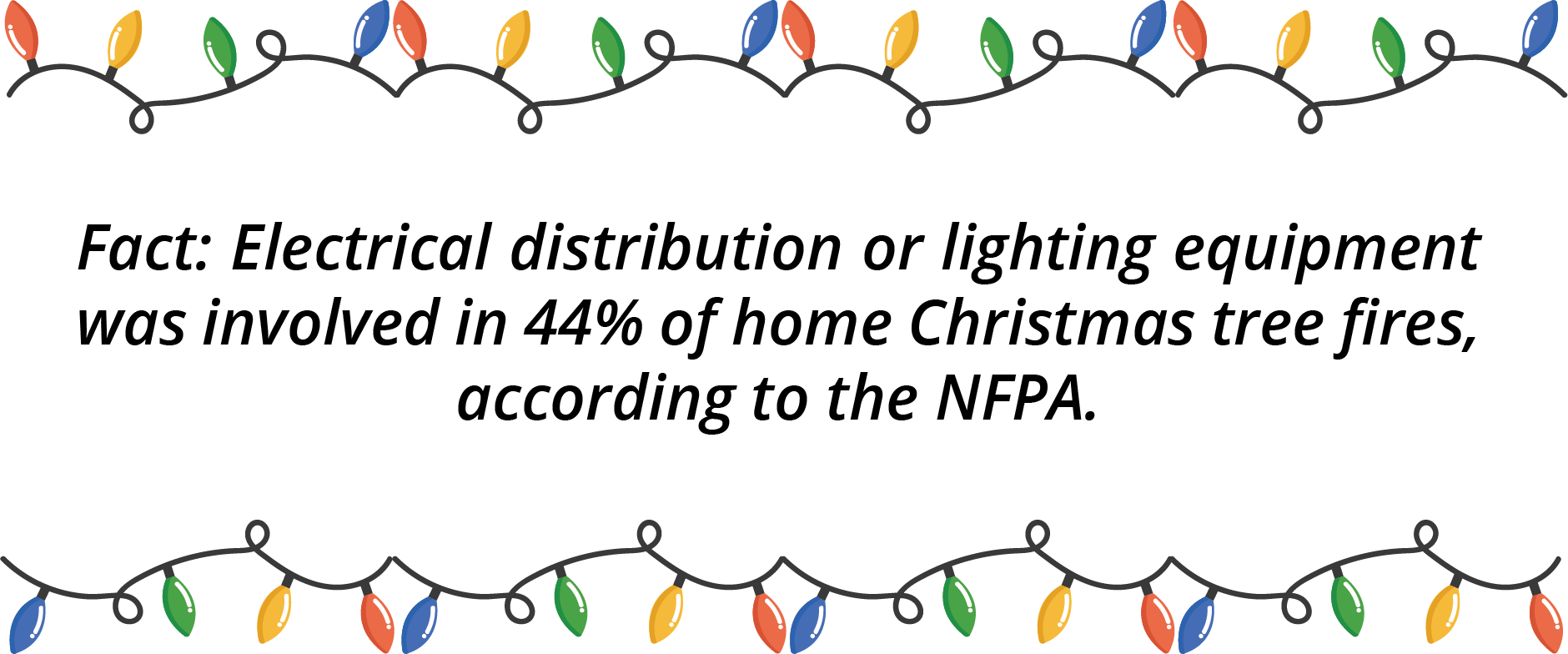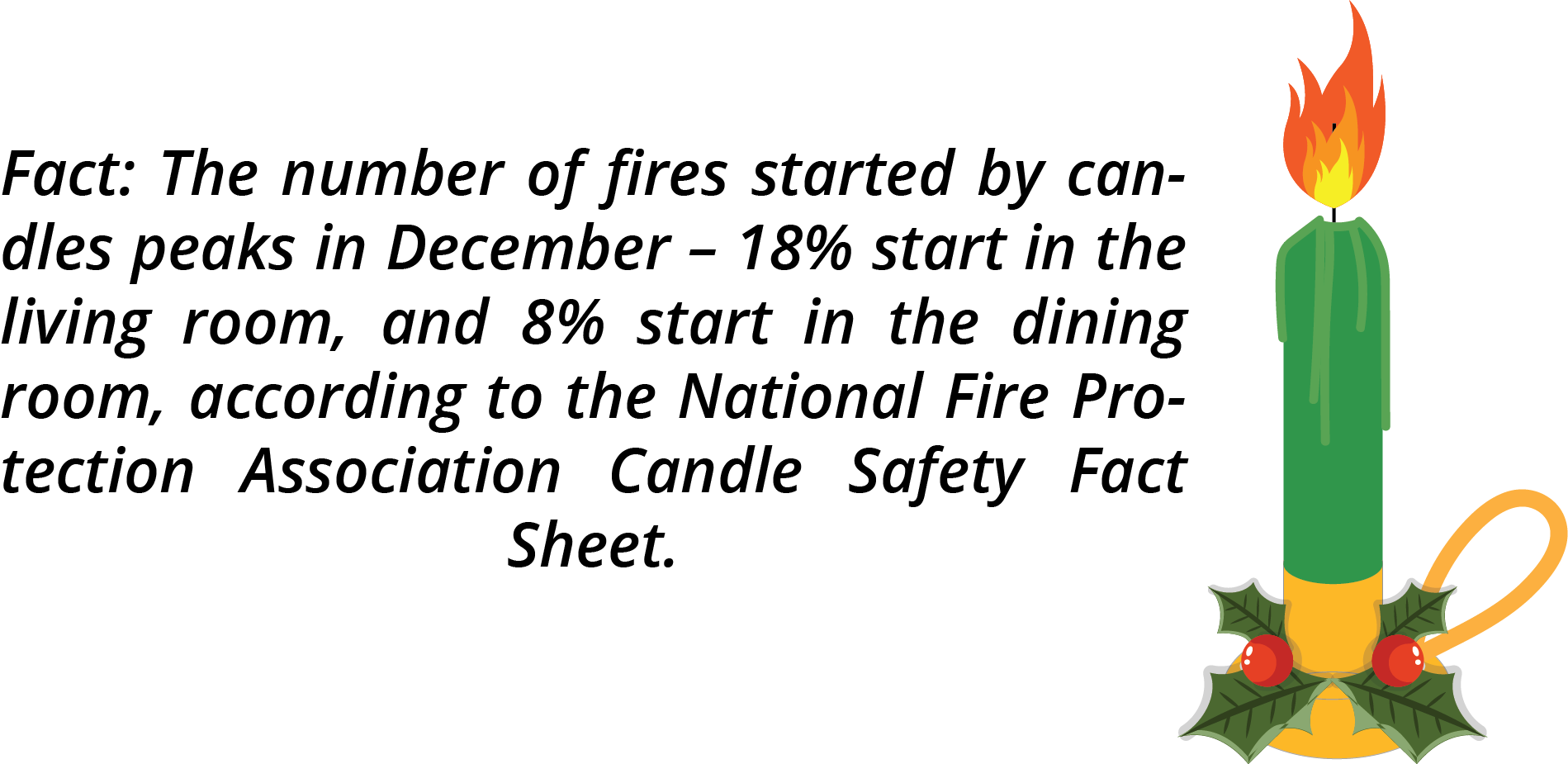Bah Humbug: Ways Holiday Decorations Can Be the Cause and Subject of Property Insurance Claims
On the first day of Christmas my insureds gave to me, claims caused by a holiday tree.
Those lyrics probably won’t catch on for the classic tune, but it’s a song a lot of adjusters will be able to sing at the end of the year. Holiday decorations increase the risk for new claims from a variety of different damages, some of which are covered by residential and commercial insurance policies.
Adjusters can prepare for the influx by knowing which insurance-related perils holiday decorations may cause as well as what types of damages these items may sustain.
Holiday Decorations Are Prone to Causing Fires
Several items associated with holiday décor, including Christmas trees, candles, and various lighting and other electrical items, cause fires that could lead to substantial losses in claims.
Christmas trees
Christmas trees and other greenery, particularly live ones, can serve as fuel for a fire. Less flammable live trees have fresh, green needles that don’t fall off when touched. Brown needles or other signs that the tree is dead or drying out indicate it is more flammable and may cause a fire to get larger quicker if the tree is ignited.
Where a policyholder places the tree can make a difference. Christmas trees should be kept at least 3 feet away from any heat sources, including fireplaces, radiators, candles, heat vents, or lights, according to the National Fire Protection Association (NFPA).
Indoor and outdoor lights and other electrical hazards
A string of indoor or outdoor lights that is flickering when it isn’t supposed to or lights that aren’t working because of a loose or burned out bulb can be frustrating. However, these can also lead to fire claims.
Insureds have been known to use lights and extension cords for uses other than how manufacturers recommend, particularly when they haven’t read the instructions. Policyholders should make sure the lights are designated for certain locations, such as outdoor use, and that they follow wattage requirements.
One way to prevent a potential electrical blaze is by replacing worn or broken cords and those with loose bulb connections. For safety reasons and fire prevention, extension cords should not be placed in dry grass or areas of water, which could each cause problems.
Adjusters may find that overloaded outlets, improper extension cord use, and frayed or damaged wires also lead to fire claims.
Insurance claims from electrical shocks or sparks also can occur, but they can be prevented. Policyholders shouldn’t use electrical lights on a metal tree; they should be careful on metal ladders while hanging lights; and they should never use staples, tacks, or nails that can cut light strands and expose wires.
Candles
It should be obvious that holiday candles increase the potential for a fire, yet they cause a percentage of residential blazes that lead to claims.
Many policyholders love the flame’s glow or have a favorite scent that will fill the room with the smell of fresh baked cookies without turning on the oven or even a fresh fir without cutting down a tree. Others like to put the inviting sight of candles in their windows. Whatever the draw, December is the peak month for home candle fires, and 3 of every 5 candle fires start when things that can burn are put too close to them, according to the National Fire Protection Association Candle Safety Fact Sheet.
Policyholders can reduce their chance of having to file a candle-related claim by blowing them out when they leave the room or go to bed and by keeping candles at least a foot away from anything flammable.
Holiday Decorations Could Make A Policyholder A Victim of Theft and Vandalism
Grinches aren’t only in stories and movies. Decorations, packages, and other items put on front lawns and porches prove to be too tempting and lead to claims regarding theft and vandalism.
Depending on the policy, home and renters’ insurance policies typically cover these losses or damages from break-ins because outdoor holiday decorations and lights are personal property.
Policyholders can reduce the risk by having someone pick up deliveries that are made when an insured isn’t home or by lessening the number of items in a non-secure location.
It might depend on the property’s value whether it would be worth it for a policyholder to file an insurance claim for stolen items. But adjusters can and do see this cause of loss.
High Voltage Surge Is Another Common Peril for Holiday Décor
Overloaded electrical strips have another peril other than fire that could cause losses for a policyholder – surges.
Power surges can take place when too many high-voltage items are plugged into one circuit, or they are the result of electricity returning after a power outage. Broken wiring, tripped circuit breakers, and lightning can also cause surges. Damage can occur all at once or over time from small, recurring energy spikes. Surges can lead to appliances, lights, and other electronics in a home or business to not work.
Adjusters may see claims from these if outlets and wiring aren’t in good condition or if policyholders don’t use surge protectors or unplug their electrically powered items during a storm.
Holiday Decorations Can Suffer from Water, Mold, and Wear and Tear
Unless holiday decorations are carefully wrapped up and stored away in airtight containers, they could be at risk for water damage or mold any time of year. And the older decorations are, the more prone they are to age-related wear and tear.
Holiday decorations are frequently bagged and boxed in humid environments such as garages, attics, and storage units. This causes moisture to linger and rots fabric, paper, and glue and could make them unusable. Mold and other water damage may or may not be covered, depending on the circumstance and the policy.
Pre-lit trees stop lighting up, ornaments break, inflatables get ripped, electrical wires and cords get old and frayed, and bulbs burn out or break. These could all be signs of wear and tear if the damage wasn’t caused by one of the previously mentioned perils. It’s important holiday decorations and other electrically powered items that appear in insurance claims are assessed to determine an accurate cause of loss and ensure it’s covered by the insurance policy.
Whether your policyholder is a Scrooge or a Griswold, StrikeCheck can help you get the insured back to pre-loss condition quickly and accurately.




